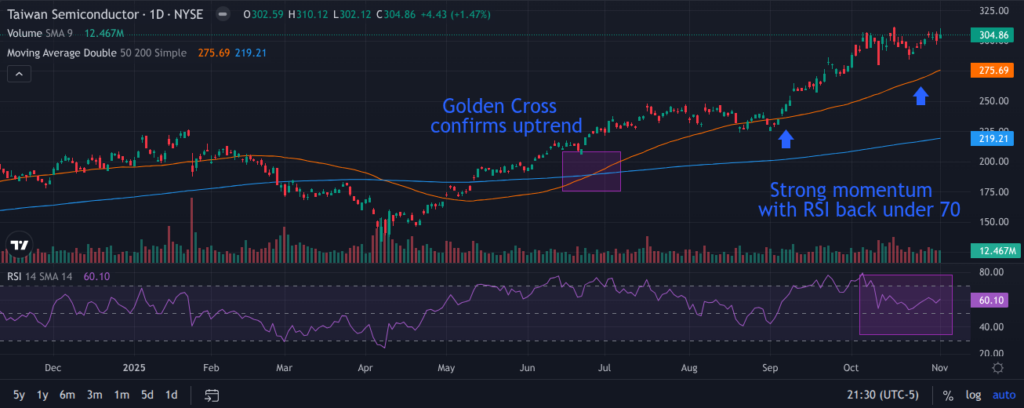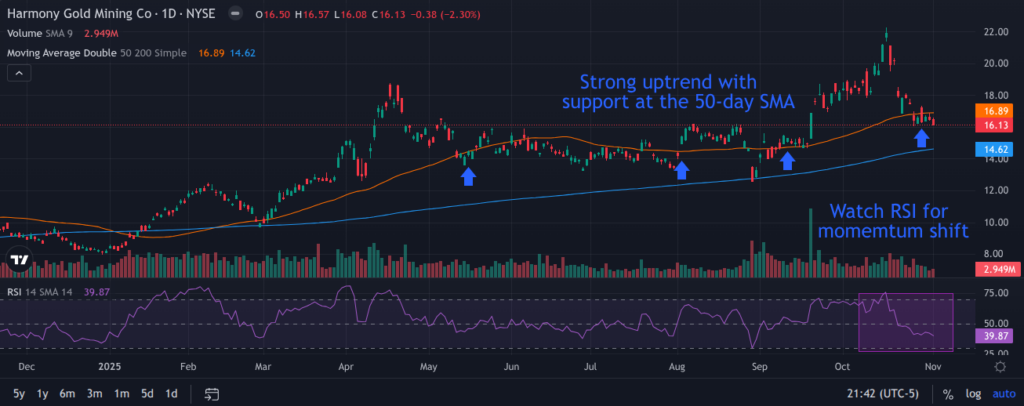
For most people, investing in emerging markets is a lot like eating vegetables at dinner. We know we're supposed to, for our own good, but it's hard when delicious steak or potatoes are sitting next to them on the plate.
Same with emerging markets; diversification is good for portfolio health, but the benefits of international investing usually go unnoticed unless times are tough, and U.S. tech stocks are too tasty to give up in boom times.
But the argument for adding emerging-market stocks to your portfolio has gained steam in 2025, and not just for the usual undervaluation reasons. With the U.S. dollar posting its worst year in recent memory against other currencies, international stocks have outperformed their domestic brethren.
Matt Maley's Trading Plan for the Post-Cut Market
Volatility is back after the Fed's latest rate cut, and traders are racing to adapt. On Wednesday, November 5 at 6 PM ET, Benzinga's Chief Market Strategist Matt Maley will break down how he's trading this new phase of the market, from short-term setups in SQQQ and SLV to the sectors he believes could rotate next. If you want to see how professional traders navigate rate cuts and volatility in real time, this session is for you. Watch the Strategy Live
The MSCI EM index jumped 7% in September alone – its seventh straight monthly gain – and Goldman Sachs has boosted its projected EM outlook for 2026.
Today, we'll look at four emerging market stocks with company-specific tailwinds that could push them to the front of the pack in an EM rally.
(Note: Each company's financial data will be converted to USD for consistency.)
LG Display Co., Ltd.
One of South Korea's most prominent tech firms, LG Display Co. (NYSE:LPL), manufactures OLED displays for televisions, laptops, tablets, smartphones, and more. The company's stock trades on U.S. exchanges via American Depository Receipts (ADRs), which serve as proxies for the company’s foreign shares. ADRs have a few key differences from American equities, and investors need to familiarize themselves with them if they want to buy individual international stocks. LPL has a market cap of $5 billion and generates most of its business from its Asian neighbors, but also reports significant revenue from the U.S. and Europe.

South Korea has been one of the more successful countries at navigating the erratic Trump tariffs, and its markets are up more than 6%. Goldman Sachs reports that 70% of Korean equities trade under book value. LGL was one of these undervalued stocks, but the market is starting to take notice. Shares are up more than 60% year-to-date (YTD), including a 28% gain in the last three months alone. The technical trade also appears strong, with the stock trading above its 50-day and 200-day simple moving averages (SMAs) and boasting an 89.85 Benzinga Edge Value score. A recent pullback has brought the price back to support at the 50-day SMA, which could be a solid entry point for new positions.
Taiwan Semiconductor Manufacturing Co., Ltd.
Taiwan Semiconductor (NYSE:TSM) is one of the most crucial companies in the artificial intelligence gold rush, and its importance isn't fading anytime soon as the U.S. and China ratchet up trade tensions. TSMC controls more than half the market for foundry-produced chips and has traded as an ADR on U.S. exchanges since 1997. Megacap tech firms like Apple, NVIDIA, and Advanced Micro Devices are among the company's vital customers, and it recently joined the $1.5 trillion market cap club itself. The stock is up more than 50% YTD, but it could still be undervalued based on recent fundamentals. TSMC released its Q3 earnings data last month and reported revenue growth of 10% from the previous quarter and 40% year-over-year (YOY). Net profit margins also improved to 45.7% from 42.7% in Q2, and as long as the AI race continues, TSMC sales should continue to grow in both volume and profitability.

The company has strong fundamentals, and the technical trends in TSM shares support this strength. The stock uptrend has been gaining momentum since the Golden Cross in June and has support from buyers along the 50-day SMA. TSM has been range-bound since the start of October, yet it still has an 89.21 Benzinga Edge Momentum Score, and all signs point to more all-time highs before the end of the year.
ICICI Bank Ltd.
ICICI Bank (NYSE:IBN) is one of India's financial powerhouses, providing services for retail and corporate banking clients. The bank offers traditional lending for mortgages, consumer loans, working capital, and cash management, as well as more targeted services such as private banking and insurance. While the company is expanding its international footprint, most of ICICI's revenue comes from domestic clients in India. However, India has become one of the more compelling cases in emerging markets, thanks to favorable demographics and the recent trend of reshoring away from China.

Unlike most international stocks, IBN shares haven't enjoyed a raging rally in 2025. The stock is down more than 9% in the last three months, which has slimmed its YTD gain to just 2%. However, there's evidence that the bottom could be in for IBN. Despite a strong fiscal Q2 2026 earnings beat, the stock still trades at just 18 times earnings with a 96.58 Benzinga Edge Growth Score. On the daily chart, the price appears to be forming a double bottom pattern, hinting that support from buyers could be inbound at this level. The Relative Strength Index (RSI) will be a key indicator to watch over the subsequent few sessions to determine whether the stock can bounce higher.
Harmony Gold Mining Co., Ltd.
Here's a way to play two 2025 investment trends in a single security. Harmony Gold Mining Co. (NYSE:HMY) is a South African-based company that primarily hunts for gold, which has soared to new all-time highs in 2025. The company has mines in South Africa and Papua New Guinea. Its market cap recently surpassed $10 billion. Gold is up more than 50% YTD, but HMY shares have nearly doubled the price of the shiny metal, leading HSBC analysts to upgrade the stock to a Buy last month.

HMY's chart shows an uptrend with strong momentum, but volatility is increasing. The stock has support at the 50-day SMA, which is being tested once again as the broader precious metals markets pull back. The share price has frequently set up bear traps this year by dipping below the 50-day SMA, only to snap back above it a few sessions later. The scenario is playing out again, and the RSI is once again a crucial indicator to watch. If the RSI bounces higher, it’s likely evidence of another bear trap. But if the RSI continues to fade, the 50-day SMA could turn from support to resistance, sending shares back toward the 200-day SMA.
Editorial content from our expert contributors is intended to be information for the general public and not individualized investment advice. Editors/contributors are presenting their individual opinions and strategies, which are neither expressly nor impliedly approved or endorsed by Benzinga.
Photo: Shutterstock







